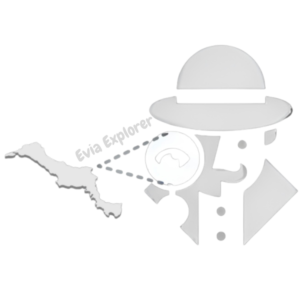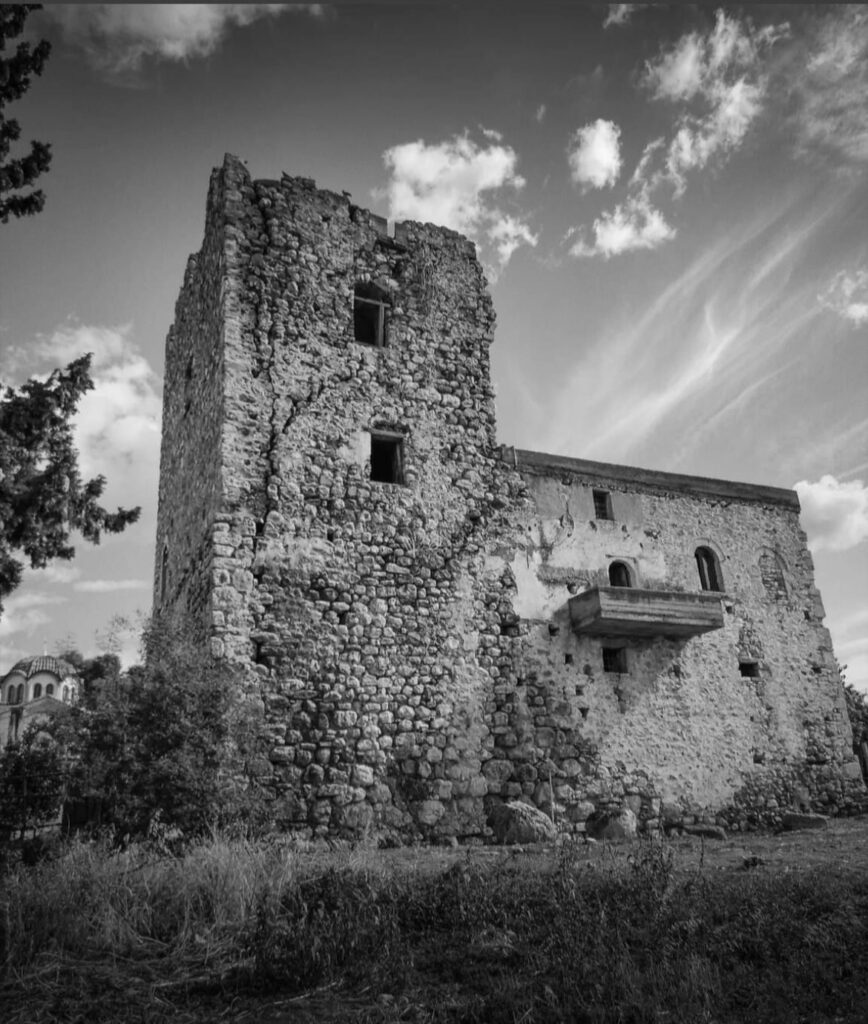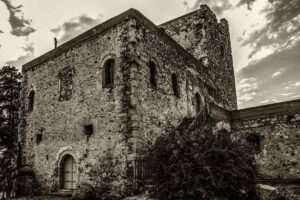Description
The area has been continuously inhabited since the Paleolithic era. In 427 BC it was hit by a tidal wave, which Thucydides also mentions. The ancient name was "Oriviai".
The tower must have been built at the beginning of the Frankish period. Some online sources state that it was built by the ruler of the Principality of Achaia William II Villeardouinos between 1255-1258. It is a fact that during that period Villeardouinos had an intense dispute with the Frankish barons of Evia claiming half of the third of the Oreas that was his wife's dowry.
After the capture of Constantinople by the Crusaders of the 4th Crusade in 1204, Boniface the Momferatikos, leader of the Crusade who had taken over as King of Thessalonica had advanced towards southern Greece. He occupied Evia, where James d'Aven built a fortress in the Straits of Euripus and took the title of Lord of Evia. After the death of James d'Aven, Boniface, in August 1205, divided the lands of Evia among his three Lombard compatriots (from Verona) in three parts as follows: the northern part, with the Oreos as their capital (Tritimorio Oreos- Terzero del Rio), the central one, with a capital - common to all three barons - Chalkida (Terzero della Clissura) and the southern one, with Karystos (Terzero di Caristo) as its capital.
The Frankish barons of Evia in their attempt to resolve the differences they had among themselves, but also with the Latin emperor of Con/polis and with the principality of Achaia, concluded agreements with the Venetians for the granting of rights and other privileges. In this way control slowly passed to the Venetians who dominated Evia during the 14th and 15th centuries.
So the tower of Rovies village can be registered as Frankish. Originally it was an observation post for protection against pirates. It was then exploited by the Venetians and later by the Turks. Evia was occupied by the Ottomans in 1470 and Rovies became the seat of a municipality. The tower became the residence of the Turk manor.
In 1832 Rovies was sold by the Turkish owner to the Greek landowner Apostolos Doumas.
Dumas repaired the tower to be more like a 19th century mansion and built the extensions lower than the main tower. In 1930 the then owner Antonis Papadopoulos also made significant changes with concrete additions after an earthquake destroyed part of the tower.
All these cares during its long history saved the tower, but altered its form to such an extent that it bears little relation to the original Frankish tower.
Location
-
R65H+8V Ροβιές, Greece



Add a review